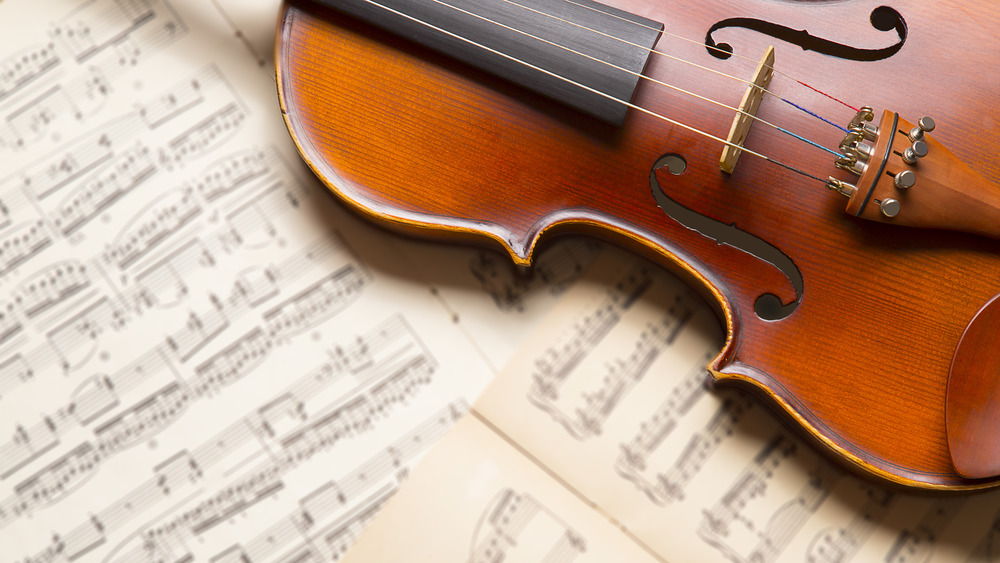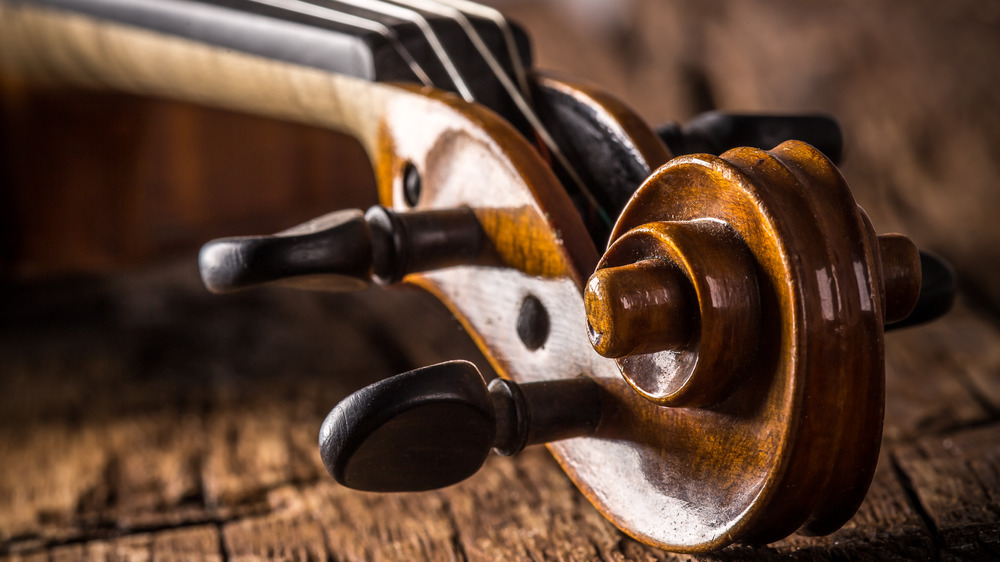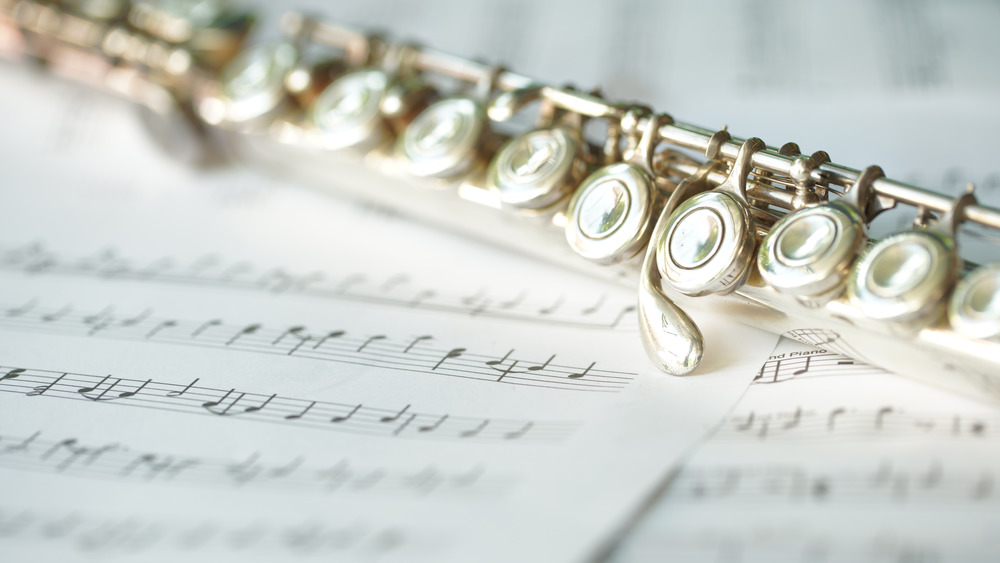The Impressive Musical Instruments Collection Inside The Library Of Congress
There are musical instruments housed at the Library of Congress? Carol Lynn Ward-Bamford gets that question a lot. A conservatory-trained flutist, Ward-Bamford is the curator of the library's musical instrument collection. "Sometimes I think that I first have to explain why there are musical instruments at the library, which is not really an intuitive thing," she told the Scripps Howard Foundation Wire. "It's like a little bit more than a library and a little bit less than a museum here."
Ward-Bamford works in the largest music library in the world. The Music Division now houses over 22 million items, including sheet music, books, letters, instruments, and other objects. According to the Library of Congress website, the Music Division was formally established in 1896, but its roots go as far back as 1815, when the library purchased the personal library of Thomas Jefferson. Among that collection were 13 books on music theory and literature. These became the foundation for what by the end of the 19th century would be a stock of 400,000 music items.
The division was greatly expanded in 20th century due to the contributions of two of the most significant patrons to American music in history. First, Elizabeth Sprague Coolidge (no relation to the president) established a foundation to expand the library's musical vision. She also financed the construction of the Coolidge Auditorium, considered one of the finest acoustic spaces in the world. A contemporary of hers broadened the library's scope in the following decade.
Gertrude Clarke Whittall began the Library's musical instrument collection
A decade after Coolidge's foundation put the Library of Congress on a path to becoming one of the largest repositories in the world for all things music, a philanthropist, Gertrude Clarke Whittall, developed that mission even further. In 1935, she donated the first instruments to the library's now awe-inspiring collection. According to Roll Call, she believed that an auditorium of the caliber of Coolidge's deserved to be filled with the music of the world's best instruments, so she dispatched agents to Italy to find them. They came back with five rare pieces made by the legendary 17th-century Italian luthier (maker of stringed instruments) Antonio Stradivari. The three violins, a viola, and a cello set the tone for the quality of instruments the collection would amass.
Among these were the "Ward" violin. Made in 1700, it was owned for 40 years by its namesake, a man named J. Ward, from London. Made in 1727, the "Cassavetti" viola is one of only a dozen or so Stradivarius violas left in the world. Now over 300 years old, the cello, named "Castelbarco," was made in 1697. The most famous instrument of Whittall's initial donation, however, is the "Betts" violin. Made in 1704, it was bought by musical instrument shop owner in London named John Betts for £1 in 1820, an amount the Bank of England estimates to be equivalent to around $128 today.
The Library of Congress boasts the world's largest collection of flutes
The Library of Congress guide to its musical instruments collection states that the second donation of instruments came in 1937, when Dr. H. Blaikiston Wilkins donated several rare stringed instruments dating back to the 18th century. But the third to come its way is one of the Music Division's most impressive collections.
In 1941, a physicist and avid amateur flutist, Dr. Dayton C. Miller, donated his massive collection of flutes and related materials. Consisting of 1,600 instruments, the Miller Collection boasts flutes and other similar wind instruments from all over the world, dating as far back as 1100 BCE. They are made of all kinds of materials, including bone, bamboo, jade, clay, ivory, and gold. Miller amassed this impressive personal collection over a 60 year period. With it he also donated around 10,000 pieces of sheet music and 3,000 books.
The fourth donation to the Library of Congress was a departure from the traditional European style of instruments. The Thai Collection was donated in 1960 by Thailand's King Bhumibol Adulyadej. The 10-piece collection includes a pair of finger cymbals called ching, a pair of flutes called khlui, small hand drums called thon and rammana, and a three-sting zither called a khe. It also includes two types of two-string fiddles called saw u and saw duang, which are played in an upright position. The Library of Congress's musical instruments collection truly is impressive and diverse.


